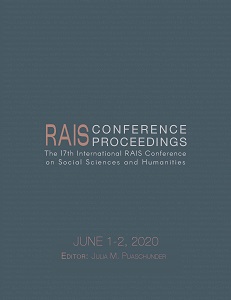Evolution and Development of the Trade Route in Ladakh: A Case-Study of Rock Carvings
Evolution and Development of the Trade Route in Ladakh: A Case-Study of Rock Carvings
Author(s): Khushboo Chaturvedi, Varun Sahai
Subject(s): Maps / Cartography, Ancient World
Published by: Scientia Moralitas Research Institute
Keywords: trade; diaspora; silk road; petroglyphs;
Summary/Abstract: From the beginning of human history trade has been major source of growth of civilization and material culture. Economy was the main crux which caused Diasporas what disseminated cultures and religions on our planet. The Silk Road was one of the first trade routes to join the Eastern and the Western worlds. Ladakh also underwent the same process of evolution of trade although it was a difficult terrain but it provides access to travelers from central Asia and Tibet through its passes. Ladakh was a crossroads of many complexes of routes, providing choices for different sectors connecting Amritsar to Yarkand. Again, from Leh to Yarkand, there were several possible routes all converging at the Karakoram Pass. Comparative small human settlements in oases of Ladakh’s desert rendered hospitality to the travelers being situated as halting station on traditional routes. Indeed, such places (halts) were natural beneficiaries of generating some sort of revenues from travelers against the essential services provided to caravans and groups of traders and travelers. Main halts on these routes are well marked with petro-glyphs right from Kashmir to Yarkand and at major stations with huge rock carving of Buddhist deities. Petro-glyphs, rock carvings, inscriptions and monasteries, mani-walls and stupas found along the trekking routes, linking one place to other, are a clear indication that the routes were in-vogue used by caravan traders; these establishments were used as landmarks or guidepost for travelers. Further, proof is derived from several monumental images of Buddhists deities, which are interpreted as signs of early Buddhist culture. Certainly these images may be the result of the perpetuating tradition of rock-carving that is noticed from China to Rome in ancient time. Nevertheless, the rock images may be taken as signs of the cultural exchange between the initiators (Kashmiri) and the local population. The purpose of this study is to establish the larger cultural and historical contexts of the arts, considering the issues of patronage and art production.
Book: Proceedings of the 17th International RAIS Conference on Social Sciences and Humanities
- Page Range: 323-331
- Page Count: 8
- Publication Year: 2020
- Language: English
- Content File-PDF

